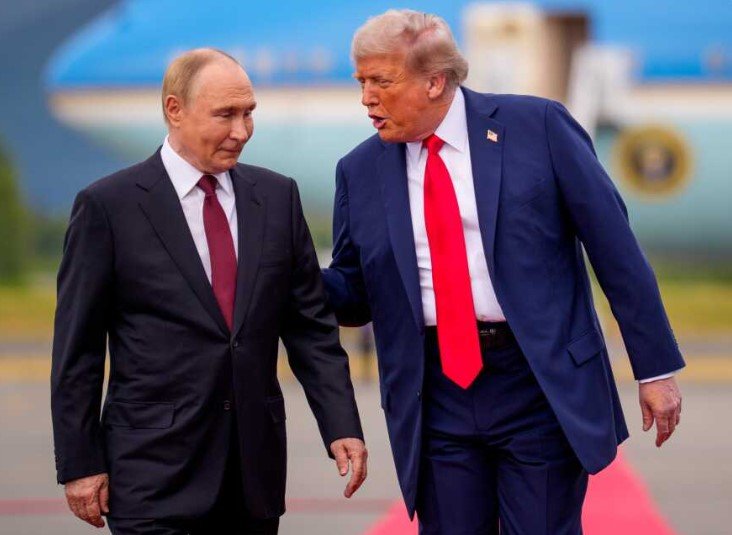US President Donald Trump led a high-level meeting at the White House on August 27, 2025, to discuss comprehensive plans for Gaza after the ongoing war. Attended by key figures like former UK Prime Minister Tony Blair and Jared Kushner, the talks aimed to address humanitarian aid, hostage releases, and long-term rebuilding, though no specific details have come out yet.
This gathering comes amid rising tensions in the Middle East, with Israel’s military pushing deeper into Gaza City and warnings of major population shifts. Trump, who earlier this year floated bold ideas like a US takeover of Gaza for redevelopment, seeks to end the conflict by year’s end, according to his aides.
Key Attendees and Agenda Highlights
The meeting brought together a mix of US officials and international experts focused on Gaza’s future. Trump’s special envoy, Steve Witkoff, described it as a large session to build a detailed strategy.
Discussions covered urgent issues like expanding food aid and securing the release of Israeli hostages held by Hamas. Officials also touched on postwar governance, drawing from past proposals that stirred global debate.
No concrete outcomes were shared right after the meeting ended late Wednesday. Insiders say the talks were political in nature, exploring ways to stabilize the region without partial deals.
A White House spokesperson noted the agenda included all aspects of the Gaza situation, from immediate relief to long-term peace efforts.
Background on Trump’s Gaza Vision
Trump has long pushed for bold changes in Gaza, starting with his surprise announcement in February 2025. He suggested the US could take control of the strip, relocate Palestinians, and turn it into a thriving area, possibly with luxury developments.

This idea drew praise from Israeli Prime Minister Benjamin Netanyahu but faced sharp criticism from Arab nations and international groups. Critics called it a violation of global laws against forced population transfers.
Over the months, Trump’s team adjusted the plan, saying it would recommend but not force relocations. By July 2025, talks with Netanyahu reaffirmed support for removing Hamas and rebuilding under new oversight.
Recent events, like a US strike on Iran in June 2025, sped up ceasefire efforts. Reports suggest Arab states like the UAE and Egypt might help govern Gaza post-war, with Saudi Arabia and Syria possibly joining peace accords.
The plan ties into broader Middle East shifts, including normalized ties under the Abraham Accords expanded this year.
Ongoing Conflict and Humanitarian Crisis
Israel’s offensive in Gaza City has intensified, leading to more displacements. The United Nations reports over 1.9 million Gazans have been forced from their homes since the war began in 2023.
Recent strikes have killed dozens, sparking global outrage. On the same day as the White House meeting, a Houthi missile from Yemen targeted Israel, forcing a German minister visiting the region to seek shelter.
US Secretary of State Marco Rubio met with Israeli Foreign Minister Gideon Saar in Washington, discussing ways to curb the violence. Both sides stressed the need for a lasting ceasefire.
Humanitarian groups warn of famine risks if aid does not increase soon. Efforts to boost deliveries have fallen short of promises made earlier this year.
Here are some key impacts of the ongoing war:
- Civilian deaths: Over 40,000 reported in Gaza since 2023, according to health officials.
- Infrastructure damage: More than 60% of buildings destroyed or severely damaged.
- Displacement: Families fleeing northern Gaza face uncertain futures in crowded southern areas.
- Economic toll: Gaza’s economy has shrunk by 80%, worsening poverty.
Potential Outcomes and Challenges Ahead
Experts predict the meeting could lead to a US-backed framework for Gaza by late 2025. Witkoff told media outlets the US aims to settle the issue one way or another before the year ends.
Challenges include opposition from Palestinian leaders and Arab states rejecting relocation ideas. A counter-proposal from the Arab League in March 2025 was turned down by the US and Israel over governance concerns.
If successful, the plan might involve international funding for rebuilding, with a focus on security without Hamas in power.
| Aspect | Current Status | Proposed Changes |
|---|---|---|
| Governance | Hamas-led, amid war | Shift to Arab state coalition, exile Hamas leaders |
| Population | 2.3 million, many displaced | Possible relocations to neighboring countries, though voluntary |
| Economy | Devastated, high unemployment | US-funded redevelopment, potential luxury zones |
| Security | Ongoing conflicts | Ceasefire within weeks, hostage releases |
| International Role | Limited aid access | Expanded US and ally involvement |
This table outlines core elements from recent discussions, based on public statements.
Any final plan must balance Israeli security needs with Palestinian rights, a tough task given the history of failed talks.
Global Reactions and Next Steps
World leaders have mixed views on Trump’s approach. Some praise the push for resolution, while others fear it ignores Palestinian voices.
In the US, the meeting aligns with Trump’s second-term focus on Middle East peace, building on his first administration’s deals.
Next steps might include more talks with Arab partners. Netanyahu could visit Washington soon to build on the momentum.
As details emerge, the world watches closely for signs of real progress toward ending the war.
What do you think about these developments? Share your thoughts in the comments and spread the word to keep the conversation going.
